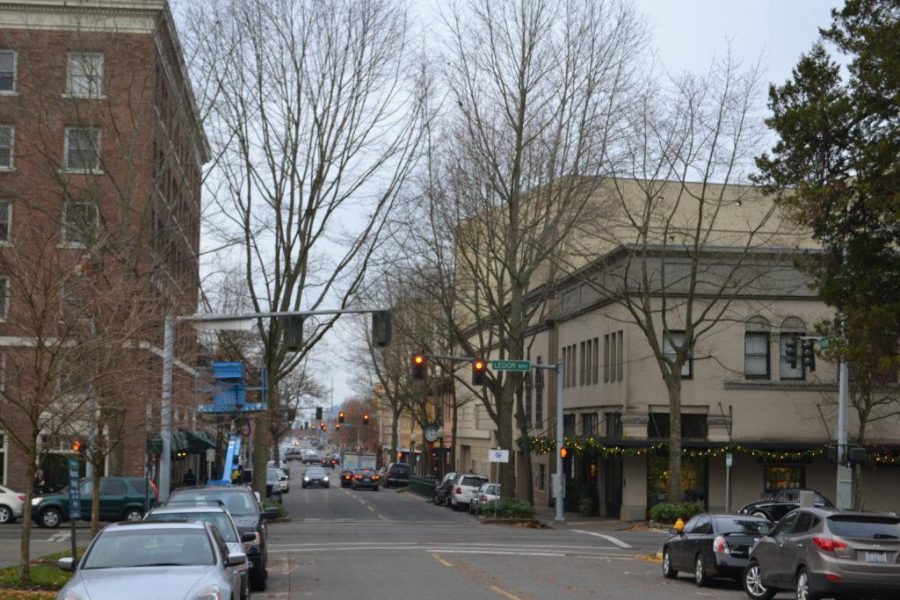It has been a busy couple of news weeks. The nation has concentrated focus on various issues, including Kabul and the Paris agreement. Another story that has received a fair amount of coverage in the past few weeks revolves around protests held on the campus of Evergreen State College. This small public liberal arts college is located in Olympia, Wash., and it is the site of the latest of a long string of college-based protests on race related issues. It’s important that as college students, and potentially as activists ourselves, we examine the confrontation at Evergreen State and learn about how we can better organize our protests.
The story began with the announcement of an annual tradition that takes place at Evergreen State. Every year, students and staff of color leave campus for the day to show homage to a play written by Douglas Turner Ward titled “Day of Absence.” The conflict arose when the organizers of the event re-characterized the event’s nature as being to discourage white students from being on campus. This did not sit right with biology professor Bret Weinstein, who emailed the entire staff in protest.
“There is a huge difference between a group or coalition deciding to voluntarily absent themselves from a shared space in order to highlight their vital and under appreciated roles (the theme of the Ward play Day of Absence, as well as the recent Women’s Day walkout), and a group or coalition encouraging another group to go away. The first is a forceful call to consciousness which is, of course, crippling to the logic of oppression. The second is a show of force, and an act of oppression in and of itself.”
He continues, “You may take this letter as a formal protest of this year’s structure, and you may assume I will be on campus on the Day of Absence. I would encourage others to put phenotype aside and reject this new formulation, whether they have ‘registered’ for it already or not. On a college campus, one’s right to speak — or to be — must never be based on skin color.”
Weinstein’s email sparked outrage that lead to student confrontations with the campus chief of police, the college’s president and Weinstein himself — a lot of these confrontations you can see online as the students filmed their rallies. Weinstein himself has not been allowed back onto campus for the sake of his personal safety, and he is currently teaching his courses off school grounds. President George Bridges has attempted to hold conversations with the outraged students, but he has been met with shouted demands, students mocking his behavior and body language and being berated when he asks for privacy in his office due to his claustrophobia.
This behavior from protesters has alienated a wide amount of potential supporters off campus and across the nation. The students have decided to throw rational dialogue out of the window and have simply gone for the intimidation route where they make demands at the threat of causing further disturbance. This is not what activism should be about, and student activists continuing to trade compromise for blind outrage and in some cases violence (like at UC Berkeley) only causes student activism to lose further credibility and to be discredited as children throwing a fit.
In light of protests at the University of Missouri, Berkeley and now Evergreen State, I implore activists here at the University of Utah to not follow in this path. The U is activist-heavy, and I have had the pleasure to witness a variety of demonstrations and marches on campus. These events have, in a civil way, lead to victories like the Presidential Task Force. This is the beauty of rational university activism: the students bring awareness to an issue on campus, and as a result the administration takes action.
In the end, it doesn’t matter which side you are on of the Evergreen State debacle. What is important in the end is that we look upon what is happening there in disdain, and we agree to bring ourselves to a higher degree. The fact that one of the demands of the protesting students is for the footage of them yelling at staff and mocking the president to be taken down from the internet should speak volumes of how much they realize they look bad to the rest of the world. When our activism goes from a place of conversation and understanding to that of chaos, we may end up getting what we demanded.
letters@chronicle.utah.edu




Marcus Volk • Mar 14, 2019 at 4:59 pm
“What is important in the end is that we look upon what is happening there in disdain, and we agree to bring ourselves to a higher degree.”
Look upon this activity in disdain? There is a ton to learn from this, whether you accept the effects or not. The causes are important, even if clouded by really poor behavior. Don’t put the whole episode underneath yourself.
Williampenn • Jun 18, 2017 at 5:23 pm
Watching the left eat itself at Evergreen (and other schools conquered by totalitarian lefties) is hilarious and delightful. Stay tuned, folks, as the commies, Antifa and BLM will likely burn the place down at some point. More popcorn, please!
Roy Burkham • Jun 14, 2017 at 11:01 am
Tell me something: What is a police force for? What is their primary goal? Is it not to PROTECT THE CITIZENS, first and foremost? However, it appears that, while the police cannot GUARANTEE the safety of the Professor, they can “guarantee” that any thug who wants to rabble-rouse, destroy property, steal property, and brow-beat others who do not agree with them, and the police stands by and “protects” their “rights” to do so!!!! Something is terribly WRONG with this posture!!!
Marilyn Lugo • Jun 13, 2017 at 3:30 pm
It’s not true that Professor Weinstein was not allowed to be back on campus. (although you can’t blame him for not wanting to relive the experience in the hallway outside his classroom)”
He was told by the head of campus Security that Security could not guarantee his safety.